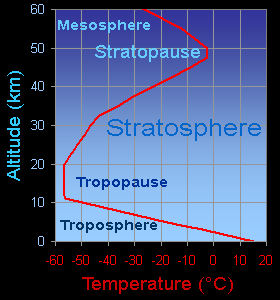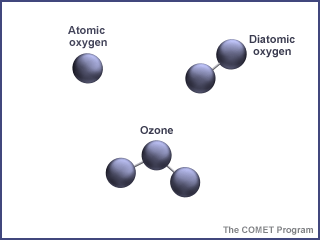Temperatures rise with increasing altitude in the stratosphere. Ozone molecules absorb energy from solar ultraviolet radiation, transforming the energy to heat.
Click on image for full size
Original artwork by Windows to the Universe staff (Randy Russell).
Click on image for full size
Original artwork by Windows to the Universe staff (Randy Russell).
Related links:
Temperature in the Stratosphere
Temperatures rise with increasing altitude in the stratosphere. Ozone molecules in the stratosphere absorb ultraviolet radiation coming from the Sun. The energy from the UV radiation is transformed into heat. The heating is most intense near the top of the stratosphere, so that is where the stratosphere is warmest.
Last modified March 30, 2009 by Randy Russell.















